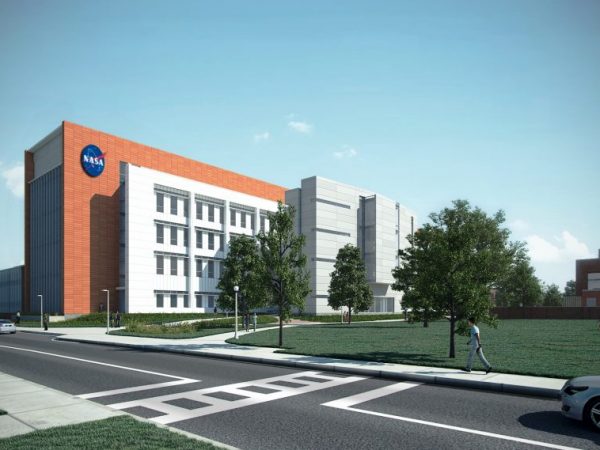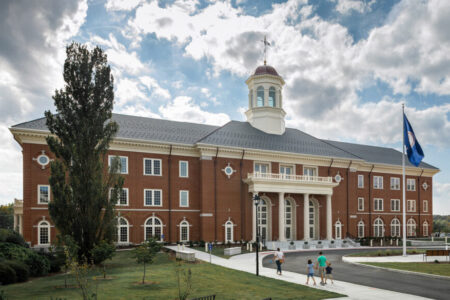What is TOTAL Building Commissioning?
Total Building Commissioning is a comprehensive quality assurance process that evaluates and verifies the design, construction, and operation of a building’s systems to ensure they function together optimally and meet the owner’s needs. This process begins at the earliest stage of a project and continues throughout the building’s lifecycle. It includes evaluating and testing the building’s architectural, mechanical, electrical, and utility systems, among others. The commissioning process ensures that the systems are installed properly, are performing efficiently, and are maintaining optimal indoor environmental conditions. By focusing on the integrated operation of all building systems, Total Building Commissioning enhances energy efficiency, system reliability, and occupant comfort, ultimately resulting in cost savings and a better overall building performance.


Commissioning Goals
Verification of Design Intent: Ensuring that the design of the building aligns with the owner’s operational needs and objectives.
Operational Efficiency: Guaranteeing that all systems are installed and performing optimally, leading to efficient use of energy and lower operating costs.
Lifecycle Performance: Focusing on the performance of the building and its systems over the entire lifecycle, not just during the initial installation or construction phase.
System Integration: Ensuring all building systems interact and function together as a whole, optimally and efficiently.
Occupant Comfort: Maintaining optimal indoor environmental conditions to ensure the comfort, safety, and health of the occupants.
Reduced Environmental Impact: Striving to minimize the building’s environmental impact through energy-efficient operations and sustainable practices.
Documentation: Providing complete and accurate records, including operation manuals, system diagrams, and maintenance schedules, for future reference and maintenance.
Staff Training: Ensuring that the staff is trained and capable of operating and maintaining the building’s systems efficiently and effectively.
Risk Mitigation: Minimizing the risk of system failures, design flaws, or construction oversights that could result in costly repairs or operational downtime.
Sustainable Certification Compliance: Aiding in meeting the requirements for certifications like LEED, WELL, or BREEAM, by ensuring sustainable design and operational efficiency.
Operational and Maintenance Cost Reduction: By ensuring all systems operate efficiently, maintenance costs and breakdowns are reduced, leading to overall lower operational costs.
Why Commission Your Building?
The process of commissioning a building is a strategic decision that a building owner makes to maximize the value of their investment and safeguard the building’s operational efficiency. At its core, commissioning is a quality assurance tool that ensures all systems within the building, from mechanical and electrical to architectural and utility, function optimally and in a coordinated manner to meet the owner’s requirements.
During the initial stages of design and construction, commissioning enables the early detection and rectification of potential issues. It verifies that the building’s design aligns with the owner’s objectives and that the systems are installed correctly, reducing the likelihood of costly construction errors and project delays.
Furthermore, the process ensures the building’s energy efficiency by aligning and optimizing all systems for peak performance. This feature translates into substantial savings in energy costs over the building’s lifecycle, making operations cost-effective. By mitigating energy waste, commissioning also aids in achieving environmental sustainability goals, a growing concern in today’s world.
One of the undervalued aspects of commissioning lies in its influence on indoor environmental quality. A well-commissioned building provides optimal lighting, comfortable temperature and humidity levels, and improved air quality, directly contributing to the occupants’ comfort and productivity. In the business context, this improved work environment can lead to increased employee satisfaction and productivity, further enhancing the return on investment.
Commissioning also prepares the building staff to manage and maintain the building effectively. As part of the commissioning process, operational and maintenance staff receive training on the building systems, enabling them to operate the systems efficiently and swiftly troubleshoot issues, leading to additional operational savings.
In terms of risk management, commissioning adds a layer of security by minimizing the risk of system failures or operational issues that could pose potential liabilities or damage the building owner’s reputation. It also provides comprehensive documentation, including system manuals, operation procedures, and maintenance plans, acting as a roadmap for the building’s ongoing operation and maintenance.
Finally, in an era where green certifications such as LEED are highly valued, commissioning can play a vital role in meeting these certification requirements. This not only adds to the building’s market value but also uplifts the owner’s public image, emphasizing their commitment to sustainability.
In essence, the process of commissioning is like an insurance policy for the building owner, assuring the building’s optimal performance, enhanced occupant satisfaction, and significant operational cost savings. Therefore, commissioning is not just a beneficial choice for building owners, but a smart, future-focused investment.
